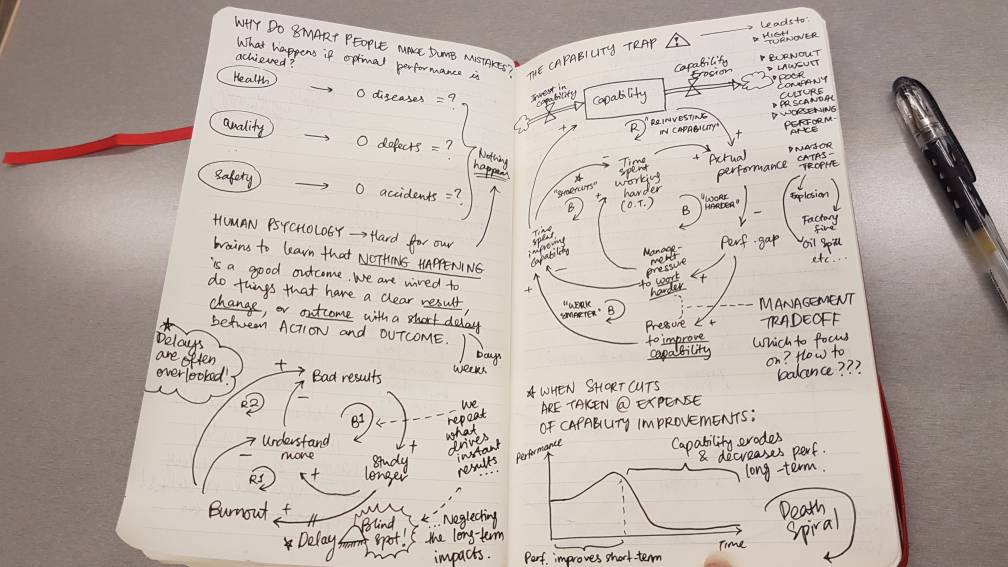“You think that because you understand “one” that you must therefore understand “two” because one and one make two. But you forget that you must also understand “and” … a simple lesson but one that we often ignore: the behavior of a system cannot be known just by knowing the elements of which the system is made.”
– Donella H. Meadows, Thinking in Systems: A Primer
What do ebola, chickens and eggs and business strategy have in common?
The answer: they can all be better understood and better managed through applying a System Dynamics approach.
If your next thought is to wonder what System Dynamics is, you wouldn’t be alone. Before I embarked on this intensive, three-day course as part of our Spring Immersion Program 2017 at MIT Sloan, I thought Systems Dynamics was another one of those fancy MBA buzzwords thrown around that basically meant analyzing and optimizing systems to get the best results. By the end of the three days with Professor Nelson Repenning, Distinguished Professor of System Dynamics and Organization Studies, my perspective completely changed.
This course alone was worth my whole ASB-MIT education. What I thought would be a class about cold, rational adjustments to calibrate performance turned out to be a deep, almost philosophical exploration of human behavior — or, in simple terms, why smart people make dumb mistakes. We were taught not only how to build models showing cause-effect links, inflows and outflows of stock and how to use sophisticated modelling tools such as Vensim to run these models and project the future state of the system – but how, ultimately, every system in the world, be it a business, a political organization, a country, an ecosystem or even a family unit can be broken down and understood through System Dynamics.
I was introduced to a new way of looking at problems: an approach that is not linear in nature, but cyclical. From exploring how epidemics spread, to what causes someone to be stuck in a cycle of poverty, to how to analyze complex business models to understanding that extra cramming will not lead to better exam results, the applications are so stunningly infinite and hauntingly profound. (There were even a few chicken and egg and “why did the chicken cross the road?” jokes subtly and expertly woven in.)
It hit me that a better understanding of System Dynamics not only helps curb the spread of deadly diseases like Ebola, determine how to manage stock flow if you’re running a chicken farm or ensure that short-term performance-enhancing efforts in a company don’t ultimately lead to delayed negative impacts in the long run; it can also have tremendous positive impact at every level of society, from business to government to society.
These three intense days not only helped me understand better some of the challenges I observed in my previous workplaces, but also led me to reflect on shortcomings in my own personal life that could have been better managed by understanding that so many things in life are connected and have run-on effects — effects that we are often blind to or overlook, underestimating their significance.
Understanding system dynamics forces us to acknowledge how flawed and irrational the way we make decisions are, and how much of our approach is based on (incorrect) assumptions and mental models. It gives us a tool that, although not perfect, helps us challenge some of those assumptions and invite others to participate in helping us make better judgment calls.
To the future classes of ASB, this is the one course you don’t want to miss!





